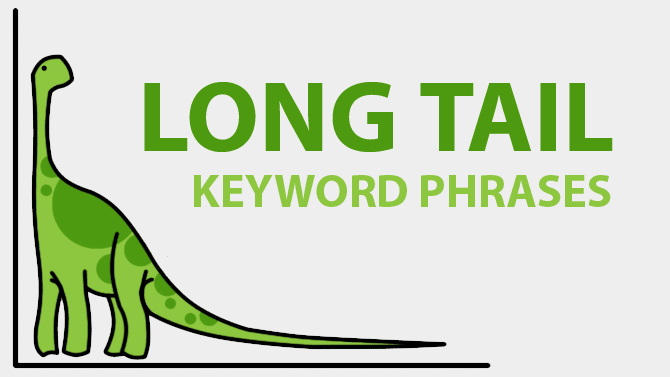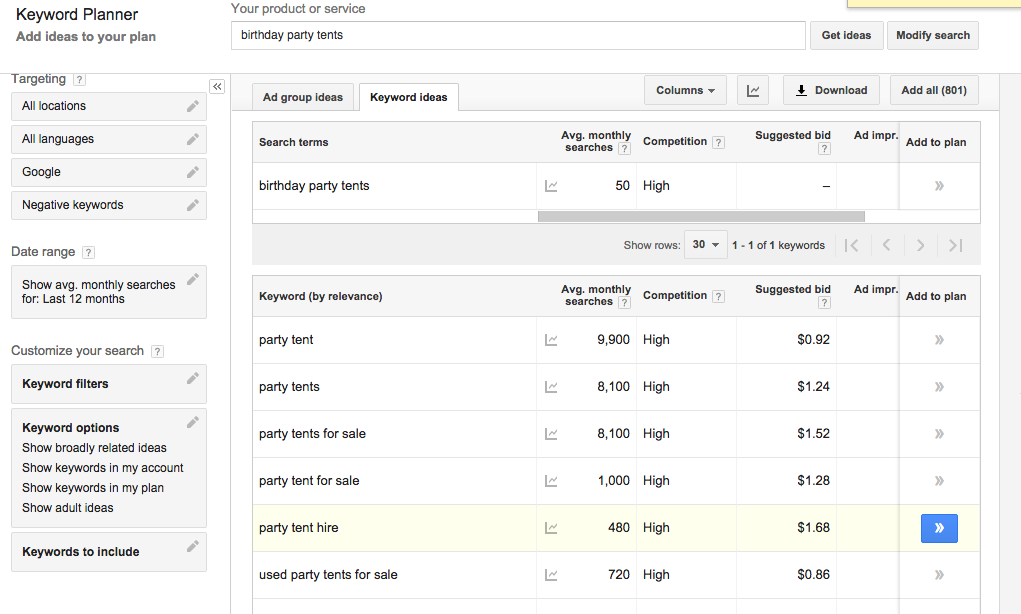Long tail keywords are more like keyword phrases that are three or more words long. In general, if you have more keywords to work with to create a phrase, that phrase is going to be more specific. For example, the keyword phrase “glasses sale” isn’t going to be nearly as specific as the long tail keyword phrase “children’s eye glasses sale near me.” It’s really as simple as that.
So the big question is really why and when long tail keywords may be the right choice vs. when top tier keywords should be your focus. What many companies don’t realize is that it’s important to bid on both long tail keywords as well as one or two word keywords. This helps create a well-rounded strategy—it doesn’t just have to be one or the other.
Two Major Reasons Why Long Tail Keywords are Important
There are many different reasons why long tail keywords are important for an SEO strategy, which you can learn more about from our sister site HigherVisibility here, but most of the benefits you see all come down to two major facts:
You get more targeted traffic.
Once again, because long tail phrases give more specific information, those who type in those keyword phrases are obviously more likely to click on your website because they want something specific. Those who typed in “party tents” could very well just be looking for general information, but those who search for “birthday party tents for 100 people” are likely much more interested in buying.
There is less competition.
Because there are more long tail phrase possibilities and the traffic is so targeted, you’re going to have less competition. This means you can get more targeted traffic for less money, and you’ll earn more visibility than you would when competing for top tier keywords.
In addition, if you know you’re getting more targeted traffic and more visibility, this means you can create more customized landing pages and more relevant content. This will always be better for user experience, which again is another reason why conversions are more likely to happen. It’s essentially next-level SEO.
How to Find Great Long Tail Keywords
Finding long tail keywords to target really comes down to thinking like your audience. Come up with a list of long tail terms you think people may be searching first (terms that are relevant to you, of course), and then use a few of the following tips and tricks to come up with more:
- Type in a few terms (long or short) that you think your audience is searching for, and then scroll down to the bottom of the Google SERP. You will see a “Searches Related To” section. This is a great list of long tail options that people are actually typing!
- Check out some of the long tail keywords competitor’s might be using. There isn’t really a tool for this unfortunately, but pay attention to the title’s they are using and the meta tags in the source code of a piece of content.
- Use the AdWords Keywords Planner to research related terms.
Once you have a list of long tail keywords you think may be high volume and low competition, you should check them in the Keyword Planner again just like you would any top tier keywords. Look at both Broad and Exact match search volume and analyze the competition to determine if the keyword is worth it. Remember, high volume and low competition is best, but in the end it’s really up to you to understand your audience and get creative.
Below shows a screenshot of the Keyword Planner offering more long tail ideas:
How to Incorporate Long Tail Keywords Into Your SEO Strategy
This is the big questions that trips-up businesses. Once you find long tail keywords you want to target, how do you find that balance between bidding on and optimizing for those long tail keywords while still simultaneously researching top tier keywords?
Of course how many keywords you target in general is going to depend completely upon the amount of content you have (usually meaning the size of your business). However, a good rule of thumb is, believe it or not, try and keep your strategy 50/50. Wordstream covered this topic here and added, “this will allow you to cast a wider net, but still monitor performance of the more descriptive phrases.”
Do you have any more recommendations for including long tail keywords into an SEO strategy? Do you have any questions? Let us know in the comment section below.

